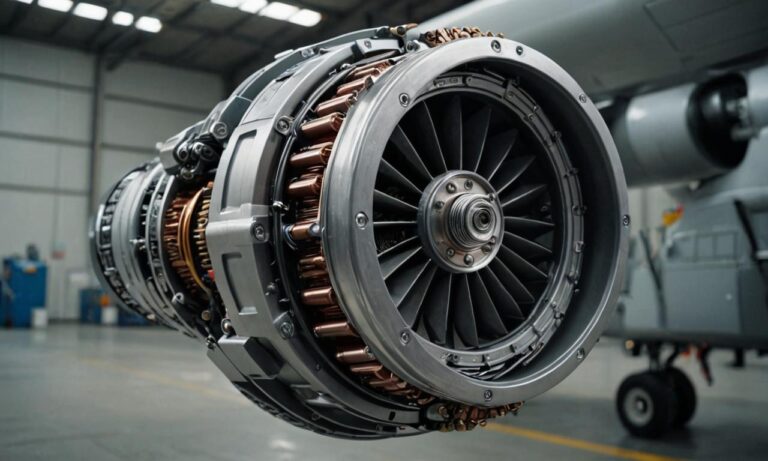When it comes to the intricate workings of an aircraft, the alternator plays a crucial role in ensuring its electrical systems function optimally. Let’s delve into the depths of how aircraft alternators work and their significance in aviation.
Understanding the Basics
An aircraft alternator is a vital component responsible for generating electrical power to charge the aircraft’s battery and supply electricity to various onboard systems, including avionics, lighting, and instrumentation. Unlike automotive alternators, aircraft alternators operate at higher voltages and are specifically designed to meet the demanding requirements of aviation.
Principle of Operation
The operation of an aircraft alternator revolves around electromagnetic induction. Inside the alternator, a rotor consisting of wire windings rotates within a stator, inducing an alternating current (AC) through electromagnetic induction. This alternating current is then rectified into direct current (DC) by a set of diodes, making it suitable for powering the aircraft’s electrical systems.
Components and Functionality
Several key components contribute to the functionality of an aircraft alternator:
- Rotor: The rotating component of the alternator, typically driven by the aircraft engine through a pulley system.
- Stator: Stationary coils of wire surrounding the rotor, which generate an electromagnetic field when exposed to the rotating magnetic field of the rotor.
- Diodes: Rectify the AC output of the alternator into DC, ensuring a consistent power supply to the aircraft’s electrical systems.
- Regulator: Monitors and controls the output voltage of the alternator to prevent overcharging or undercharging of the aircraft battery.
Integration with Aircraft Systems
Modern aircraft alternators are intricately integrated with the overall electrical system of the aircraft. They are typically connected to the aircraft’s electrical bus through a voltage regulator, which ensures that the electrical load is adequately supplied and prevents damage to the battery from overcharging.
Charging the Battery
One of the primary functions of the alternator is to charge the aircraft’s battery during flight. As the engine operates, the alternator generates electrical power, which is used to replenish the charge of the battery. This ensures that the aircraft has a reliable power source even in the event of an engine failure.
Efficiency and Reliability
Efficiency and reliability are paramount in aviation, and aircraft alternators are engineered to meet these exacting standards. Manufacturers employ rigorous testing and quality control measures to ensure that alternators perform flawlessly under demanding operating conditions.
Maintenance and Servicing
Regular maintenance and servicing are essential to ensure the continued reliability of aircraft alternators. This includes inspecting electrical connections, testing voltage output, and replacing worn components as necessary. Adhering to manufacturer-recommended maintenance schedules is critical to preventing in-flight electrical failures.
The aircraft alternator serves as a vital lifeline for electrical power in aviation. Its intricate design and precise functionality ensure that aircraft systems receive a consistent and reliable power supply, contributing to the safety and efficiency of flight operations.
Alternator Efficiency
Efficiency is a critical aspect of aircraft alternators. Manufacturers employ advanced engineering techniques to maximize efficiency, minimizing energy losses during power generation and conversion processes. This optimization contributes to fuel efficiency and overall performance of the aircraft.
Environmental Considerations
In addition to efficiency, aircraft alternators are designed with environmental considerations in mind. Efforts are made to reduce emissions and environmental impact throughout the alternator’s lifecycle, from manufacturing to disposal. Sustainable materials and processes are often utilized to mitigate the environmental footprint.
Frequently Asked Questions
| Question | Answer |
|---|---|
| How often should aircraft alternators be inspected? | It is recommended to inspect aircraft alternators during routine maintenance checks, which typically occur at specific intervals determined by the aircraft manufacturer or regulatory authorities. |
| Can aircraft alternators operate at variable speeds? | Yes, aircraft alternators are designed to operate efficiently across a range of engine speeds commonly encountered during flight. |
| What are the common signs of alternator failure? | Common signs of alternator failure include dimming lights, erratic gauge readings, and electrical system malfunctions. Prompt attention to these symptoms can prevent potential in-flight emergencies. |






